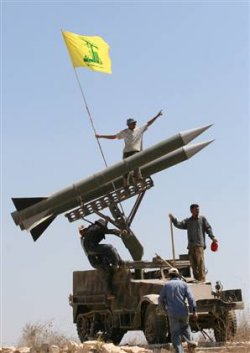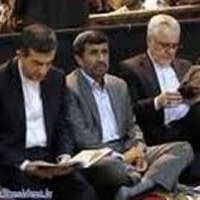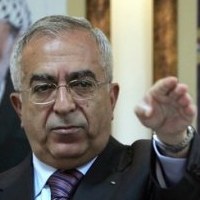Has Hizbullah changed? The 7th Hizbullah General Conference and its continued Ideology of Resistance
by Brig.-Gen. (ret.) Dr. Shimon Shapira10
Source: Intelligence and Terrorism Information Center
First Published: December 15, 2009; Jerusalem Center for Public Affairs – vol.9, Nr.15.
- Some Western analysts believe the political manifesto published in the wake of Hizbullah’s 7th General Conference at the end of November 2009 represented a fundamental change in Hizbullah policy.
- While its link to Iran as the ultimate source of authority was not mentioned in this or any previous political manifesto, this link – that is part of Hizbullah’s essence – appeared in the “Open Letter” (Resala Maftuha) of 1985, which remains the founding manifesto of Hizbullah and continues to serve as the movement’s ideological basis.
- The preface to the latest manifesto describes the decline of the United States as the sole superpower and the retreat of American power throughout the world. In reflection of these global changes, Hizbullah offers its resistance to Israel and the United States as the model for emulation throughout the world.
- Hizbullah’s vigorous insistence that it retain an army of its own that does not heed the authority of the state but rather the representative of Iran’s leader in Lebanon makes a mockery of the clauses in the political manifesto about Lebanon being the eternal homeland. Furthermore, by building a state-like system parallel to that of the Lebanese state, and one that relies on aid and funding from Iran and Syria, Hizbullah does not contribute to the strengthening of Lebanon.
- The decision of the Lebanese government to recognize the continued legitimate existence of Hizbullah’s armed militia demonstrates less a case that Hizbullah underwent a process of “Lebanonization,” but rather that the Lebanese state has undergone a process of “Hizbullazation.”
- Hizbullah’s alleged move toward pragmatism is based to a large extent on an Iranian decision to create a new atmosphere in Lebanon that will allow it to work unmolested. Iran is looking for strict silence in the Lebanese arena in order to enable Hizbullah to reconstruct its strategic capabilities (including long-range rockets and missiles) in Lebanon in order to make use of these capabilities at a time to be determined by Tehran.
Hizbullah wound up its clandestine 7th General Conference at the end of November 2009 that took place and lasted about four months. Hassan Nasrallah was again chosen to be Hizbullah’s general secretary and, as with previous conferences, the movement published a political manifesto. Some Western analysts believe the manifesto represented a fundamental change in Hizbullah policy. Indeed, a few days after it was proclaimed, British Foreign Secretary David Miliband told the Beirut Daily Star, “carefully considered contact with Hizbullah’s politicians, including its MPs, will best advance our objective of the group rejecting violence to play a constructive role in Lebanese politics.”1 Later, British spokesmen denied they had changed their policy toward Hizbullah.
Hizbullah’s 6th General Conference was convened in 2004 and, according to the movement’s bylaws, the 7th General Conference was to have convened in 2007. However, due to the Second Lebanon War and the debates and internal struggles that erupted in its wake within Hizbullah, together with the death of Hizbullah military commander Imad Mughniyeh in a car bombing in Damascus in February 2008, the conference was postponed twice and was finally convened in 2009.2
Hizbullah’s Leadership
Anyone proposing that Hizbullah has fundamentally changed should carefully examine the organization’s leaders elected by the 7th General Conference. The newly elected Shura Council is comprised of:
- Sayyed Hassan Nasrallah – Secretary-General
- Sheikh Naim Qassem – Deputy Secretary-General
- Sayyed Hashem Safi al-Din – Head of the “Shura Council Executive”
- Sheikh Mohammed Yazbek – Head of the Spiritual Body
- Sayyed Ibrahim Amin al-Sayyed – Head of the Political Council
- MP Haj Mohammed Raad – Head of the Loyalty to Resistance Bloc (the Hizbullah faction in the Lebanese Parliament)
- Hussein Khalil – Political Assistant to the Secretary-General
- The name of the member of the leadership who replaced Imad Mughniyeh, who headed the Jihad Council – the supreme military body – and represented it in the Hizbullah leadership, was not publicized for security reasons.
Aside from the members of the Shura Council, Hizbullah has not published the names of other officeholders in the movement and close associates have made it clear that no substantial change has occurred in the movement’s structure and leadership.3 It would seem that whatever changes occurred involved primarily second and third echelon officeholders in the party hierarchy as well as in the intra-party administrative frameworks at the unit and subunit levels. These changes were intended to incorporate new people into the leadership of the militia in order to infuse the ranks of Hizbullah with new blood.
It is plausible to assume that Nasrallah viewed changes in Hizbullah’s military framework following the Second Lebanon War and the death of Imad Mughniyeh to be among the 7th Conference’s top priorities, in order to rehabilitate and strengthen Hizbullah’s military power and to prepare for the next conflict with Israel. Concomitantly, Nasrallah sought to contend with the penetration of Hizbullah ranks by Israeli intelligence, whose footprints are periodically discovered.
The Political Manifesto
On November 30, 2009, Hizbullah’s new political manifesto4 was read by Hassan Nasrallah from a hiding place and was projected on giant screens at a press conference in Beirut.
As with previous political manifestos,5 the new manifesto – 32 pages long and published in a sky blue binding – reflected the changing political reality in which Hizbullah operated and the process of Hizbullah’s integration into the Lebanese state and its institutions. While the theoretical-ideological foundation focusing on the link to Iran as the source of authority (wali al-fakih) was not mentioned in any of these manifestos, this link – that is part of Hizbullah’s essence – appeared in the “Open Letter” (Resala Maftuha) of 1985, which bore the portraits of Imam Khomeini and Sheikh Raghib Harb.6 The Open Letter of 1985 remains, at least formally, the founding manifesto of Hizbullah and continues to serve as the movement’s ideological basis.
The preface to the latest manifesto emphasizes that it was intended to present Hizbullah’s political position within the framework of the international and Lebanese reality in which Hizbullah was operating. This reality includes historical changes presaging the decline of the United States as the sole superpower, the collapse of financial markets in the United States and worldwide, and the confusion and impotence of the American economy. All this, claimed the manifesto, presages the retreat of American power throughout the world and the beginning of the accelerated decline of Israel. In reflection of these global changes, Hizbullah offers its resistance to Israel and the United States as the perfect solution. In its view, resistance has become an international value that constitutes a source of inspiration and a model for emulation to all those who aspire to freedom and independence throughout the world.
The first chapter of the manifesto surveys American aspirations for global hegemony since World War II and concludes:
“There is no doubt that the American Terrorism is the origin of all terrorism in this world. The Bush administration has turned the United States into a threat menacing the whole world on all levels and dimensions, and if an international survey was to be made, the U.S. would turn out to be the most hated in the world.”
The second chapter deals with Hizbullah’s status in Lebanon, and here we observe a significant change in Hizbullah’s position toward the Lebanese state:
“Lebanon is our homeland and the homeland of our fathers and ancestors. It is also the homeland of our children, grandchildren, and future generations. It is the country to which we have given our most precious sacrifices for its independence and pride, dignity and freedom.
We want a unified Lebanon for all Lebanese alike. We oppose any kind of partition or federalism.”
With regard to the resistance (muqawama), it emphasized that:
“It derives from the eternal threat of Israel to Lebanon and the difficult circumstances arising from the absence of a Lebanese authority. These required a campaign to obtain a homeland via armed resistance. The crowning achievements are the liberation in 2000 and the historic victory in July 2006.”
The manifesto does not deal with the issue of the continued existence of the Hizbullah militia. This is a fundamental issue that is not open to discussion from Hizbullah’s standpoint. Thus, Nasrallah makes clear that it was impossible for Hizbullah to disarm.7 Instead, the Hizbullah leader emphasized that the main effort is now invested in:
“…creating a defense strategy that will be based on the integration of the resistance that will assist in the defense of the homeland, strengthen its security and stability, (and)…liberate what remains under “Israeli” occupation in the Shaba farms and Kfar Shouba hills and the Lebanese village of Ghajar, as well as liberating the detainees and missing people and martyrs’ bodies.”
With reference to the political regime in Lebanon, Hizbullah calls for the abolition of the political sectarianism on which the Lebanese state is predicated. Nasrallah explained at a press conference:
“Let’s be realistic, the abolition of political sectarianism in Lebanon is one of the most difficult issues….Unfortunately, many of those who call for and advocate the abolition of political sectarianism are not serious about the issue.
This committee may continue its dialogue for five, ten, twenty or even thirty years because, ultimately, no one can just simply describe a method of how to abolish political sectarianism….Possibly, after a long debate…we may reach the conclusion that realism necessitates that we accept sectarianism and that any efforts to the contrary would be a complete waste of time; that abolishing political sectarianism in this country is impossible.”
The manifesto praises the excellent relations between Lebanon and Syria and views them as a mutual political, military, and economic necessity. It views Islamic Iran as a primary and important country and a chief supporter of the Palestinians. However, it includes no reference to Iran’s supreme leader Ayatollah Khamenei as being Hizbullah’s source of authority, and does not mention Hizbullah’s loyalty to the Iranian leadership.
Nasrallah was asked at the press conference about the 1985 Open Letter that spoke of a single leadership for Iran and Hizbullah. He responded:
“We have provided [in the new manifesto] a political document, but have not dealt with aspects of belief, ideology, or intellectual culture….Our position on the question of the source of authority (wali al-fakih) is an intellectual, ideological and religious one, and not a political position subject to review.”
In other words, according to Nasrallah, Hizbullah remains ideologically the same party it was back in 1985. Indeed, one analyst with a deep understanding of the Shiite group called the new Hizbullah political manifesto “a point-by-point expansion” of the principles laid out in its founding document in 1985.8
The third chapter of the manifesto deals with Palestine in the peace agreement process, the status of Jerusalem, and the Palestinian resistance. After determining that Zionism is a racist movement, Hizbullah makes it clear that the liberation of Palestinian lands including Jerusalem is a mission that is imposed upon the Arab and Islamic world. Hence it is clear that in its own self-appraisal, Hizbullah enjoys no special advantage or preferred status in leading the Palestinian struggle against Israel. At the same time, Hizbullah rejects any agreement with Israel that will be predicated on recognition of the legitimacy of its existence or any concessions on Palestinian lands. It was emphasized that this position is consistent, fixed and final, and there can be no retreat from it even if the entire world were to recognize Israel.
While the 7th Conference was taking place in Lebanon, its original architect, Ali-Akbar Mohtashemi-Pur, was staying in Damascus. Mohtashemi, who crossed the lines and joined the reformist camp, participated in a conclave of support for Palestine that took place at the shrine of Sayyida Zaynab, where he was attacked by Iranian representatives who were supporters of Ahmedinejad.9
Summary
As reflected in its political manifestos, Hizbullah has been focusing on consolidating its status within the internal Lebanese arena since 1992 when Hizbullah received the authorization of Iranian supreme leader Khamenei, its source of authority, and sent its representatives to Parliament, and in 2005 when it sent its representatives into the Lebanese government in the wake of the withdrawal of the Syrian army from Lebanon, in order to guarantee the continued existence of its independent military force.
The Lebanese flag, which was brutally trampled by Hizbullah during the 1980s, now occupies a place of honor alongside the yellow banner of Hizbullah. The impression is that Hizbullah has adopted the Lebanese state and in its self-appraisal has become an authentic representative of Lebanese national identity. There is a perpetual gap between the pragmatic spirit coming from the Hizbullah political manifesto and Lebanon’s political reality. Hizbullah’s vigorous position insisting that it retain an army of its own that does not heed the authority of the state but rather the representative of Iran’s leader in Lebanon makes a mockery of the clauses in the political manifesto about Lebanon being the eternal homeland. Furthermore, by building a state-like system parallel to that of the Lebanese state, and one that relies on aid and funding from Iran and Syria, Hizbullah does not contribute to the strengthening and health of the Lebanese homeland that Nasrallah says he wants to preserve and nurture. Finally, the subversive conduct of Hizbullah, which acts against the interests of the Lebanese state and sends forth subversive and violent elements into nearby countries such as Iraq, Egypt, and Jordan, makes the concept of loyalty to the Lebanese homeland void of any content.
It would seem, therefore, that the decision of the Lebanese government headed by Saad Hariri to recognize the continued legitimate existence of Hizbullah’s armed militia demonstrates less a case that Hizbullah underwent a process of “Lebanonization,” but rather that the Lebanese state has undergone a process of “Hizbullazation.” Parallel to adopting the Lebanese identity, Hizbullah preserves its essential link to Iran: its commitment to the Iranian leader as the source of authority surpasses any other commitment including on the political level. Hizbullah adopts decisions on war and peace taken by Iran, the sole recognized source of authority, and not only on theoretical and religious issues, as Nasrallah may wish to claim.
Hizbullah’s alleged move toward pragmatism is based to a large extent on an Iranian decision to create a new atmosphere in Lebanon that will allow it to work unmolested. After the Second Lebanon War that erupted at Israel’s initiative and caught Hizbullah by surprise, Iran ordered Hizbullah to restrain activities against Israel and intensify its integration into the political life of the Lebanese state. Iran is looking for strict silence in the Lebanese arena in order to enable Hizbullah to reconstruct its strategic capabilities (including long-range rockets and missiles) in Lebanon in order to deter Israel, and to make use of these capabilities at a time to be determined by Tehran in the event that deterrence fails. This is the main reason for the quiet prevailing in South Lebanon, and it seems that Israeli deterrence of Hizbullah plays only a minor role.
Notes
1. Josie Ensor, “Britain Open to Contacts with Hizbullah,” Daily Star (Beirut), December 1, 2009.
2. As-Safir, November 24, 2009.
3. Ibid.
4. Al-Manar, November 30, 2009.
5. This manifesto joins a series of previous political manifestos that were published at the end of the general conferences that Hizbullah conducted in May 1993 (the 3rd Conference), summer 1995 (the 4th), summer 1998 (the 5th), in 2004 (the 6th), as well as the election manifestos for the parliamentary elections in which Hizbullah participated in 1992, 1996, 2000, and 2005. For an analysis of Hizbullah’s political and election manifestos, see Shimon Shapira, Hezbollah between Iran and Lebanon (Tel Aviv: HaKibbutz Hameuhad, 2000), pp. 186-192.
6. For an analysis of the “Open Letter,” see Shapira, pp. 126-8.
7. Abdul Rahman Al-Rashed, “Nasrallah: Prime Minister of Lebanon,” Asharq Alawsat, December 7, 2009.
8. Tony Badran, “For Hezbollah, Lebanon Is an Afterthought,” NowLebanon.com, December 8, 2009, NowLebanon.com.
9. mowjcamp.com.
10. Brig.-Gen. (ret.) Dr. Shimon Shapira is a senior research associate at the Jerusalem Center for Public Affairs.
Mazzeltov,
Crethi Plethi



 RSS
RSS












RT @CrethiPlethi: Hizbullah: did they change? #israel http://bit.ly/7BC1sh
RT @CrethiPlethi: Hizbullah: did they change? #israel http://bit.ly/7BC1sh